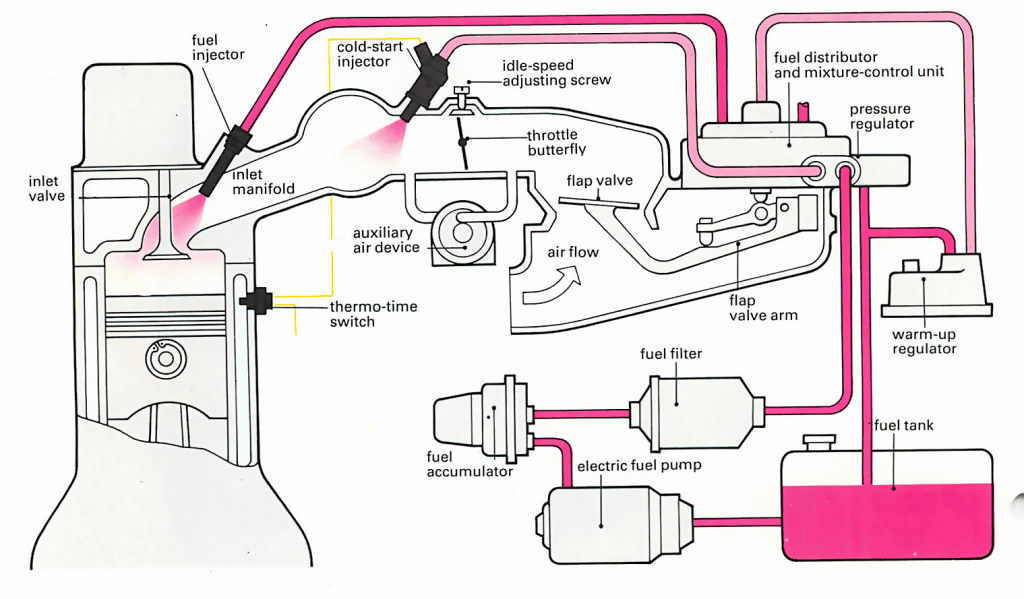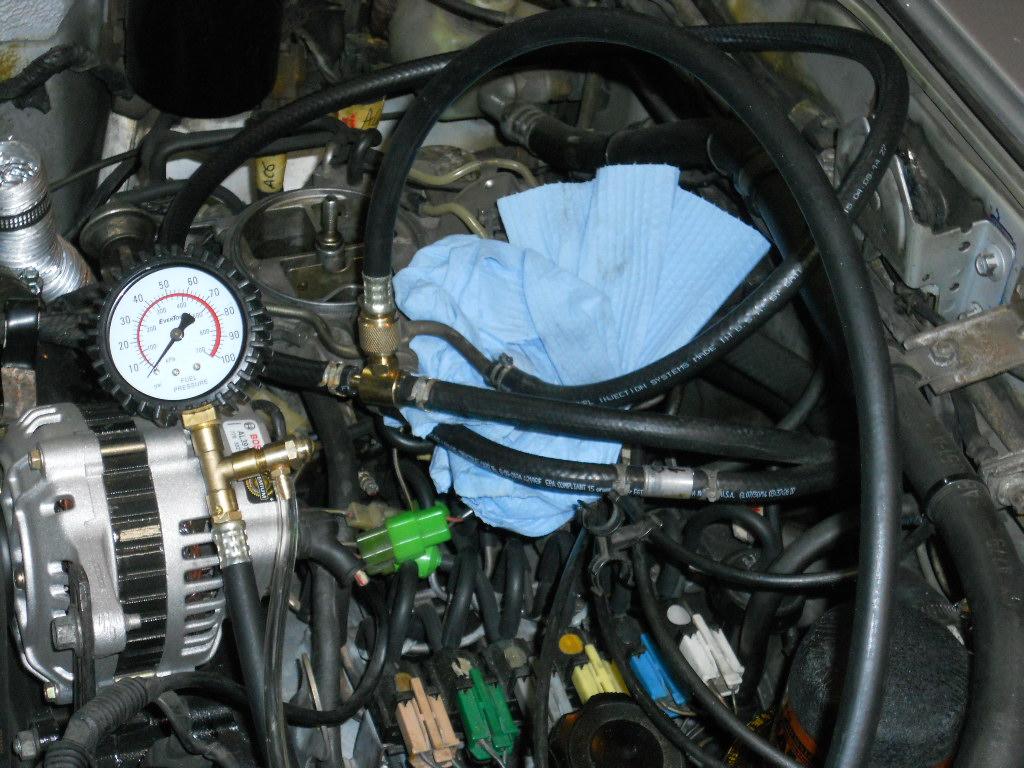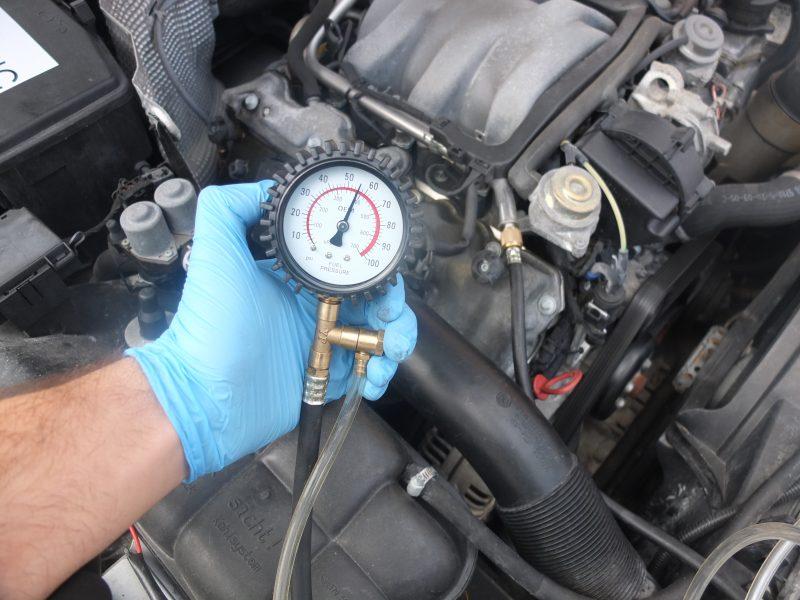A fuel pump, which can be either mechanical or electric, does the job of transferring gas from the fuel tank to the engine. The pumps can overheat and fail if your car is low on gas. It’s not a good thing as the engine will be at a standstill in the event of a fuel pump failure. You have to know how to check fuel pressure because it drops when the pump is weak, signaling that you need to take immediate action.
Contents
Fuel Injection System Understanding
There are two basic types of fuel injection systems currently being used by giant car brands.
The “port” or “multi-port” fuel injection is the first type. The fuel injectors spray fuel directly behind the intake valve into the intake manifold. These systems normally have one fuel injector per cylinder.
The second type is commonly known as Throttle Body Injection (TBI) for GM and Chrysler vehicles or Central Fuel Injection (CFI) for Ford vehicles. These systems use one or two fuel injectors which are mounted on top of the intake manifold. They spray fuel into the throttle body like the conventional carburetor.

Fuel Pump Warning Signs
Here to know when to check the fuel pressure:
1. Car surging
Sometimes if the gas pedal has been depressed, a vehicle is moving along normally at a consistent speed and then, it will pick up and surge forward out of nowhere, which is caused by irregular resistance within the fuel pump motor.
2. Getting hotter
The temperature of the car can help one to predict a fuel pump emergency. If the heat rises and the car stalls, pay attention to your temperature gauge because this may mean the fuel pump motor is having problems. If it continues to stall out, the fuel pump will start to deteriorate and need to be replaced.
3. More gas fill
Always take notice of the frequency you’re fueling up your car. Fuel pumps have a relief valve; if the relief valve fails to open, more fuel than necessary will flow into the engine system. If your vehicle normally gets decent gas mileage and then suddenly becomes a gas hog, there could be an emergency under the hood.
4. Check fuel pressure gauge
The fuel pressure gauge illustrates how much fuel is getting to the engine. You can check that gauge while someone else is revving the car. By checking the owner’s manual, you can see how much pressure should be exerted when the pump is operating properly—anything less than that is a signal that your fuel pump needs immediate attention.
5. Engine can’t ignite
Drivers who fail to notice the warning signs above will eventually end up with an engine that refuses to start. When a fuel pump completely malfunctions, fuel cannot get to the engine upon ignition. If this happens, the engine will crank and rev but never start. To diagnose a fuel pump malfunction, check for low pressure in the fuel line and/or a blown fuse.
6. Power loss
A car is put under huge stress when climbing a hill or hauling heavy cargo. In such situations, the weakening elements of the fuel pump will start to cause trouble and the pump will be unable to keep up with the vehicle’s fuel demands, leading to a loss of overall power.
7. Engine sputters at high speeds
One of the best indicators of a fuel pump failure is found on the road while driving your car at a consistently high speed. If the vehicle suddenly sputters and then resumes regular performance, there could be something wrong with the fuel pump. When the pump is struggling to supply a constant stream of fuel to the engine at the proper pressure, this engine sputtering happens.
Watch more:
Two Ways To Test The Functionality Of A Fuel Pump
A pump shows some subtle warning signs before going completely out of order. It is possible to about the total breakdown and costly repairs if you can detect the warnings and diagnose the problems. The symptoms generally include the check engine light coming on, jerking of the car, stalling the engine, and low engine power. If you know how to check fuel pressure and test the fuel pump, you will be able to diagnose the problems.

See more:
1. How to examine the fuel pump
In most cases, the pump fails because of the failure of the fuel filter. Modern automobiles have a filter in the fuel tank that you can change at the time of replacing the pump. However, older vehicles have an external filter that needs replacement after 20,000 miles. If the pump is showing warning signs, you should replace the filter first.
If your car has an electric pump, you can do the multimeter testing to examine its health. Take a multimeter with an amp clamp, turn the pump on, and place the amp clamp over the positive wire going to the fuel pump. Start your vehicle and record the amperage reading on the meter. If the reading does not match the manufacturer’s specifications, you have to replace the pump.
Similarly, you have to get the voltage reading by placing the meter leads on appropriate terminals. The sure sign of the pump’s failure is the presence of battery voltage in the meter.
2. How to check fuel pressure
Most car models have a test port on the fuel injector rail for the testing of the pressure. If your car does not have it, check the manufacturer’s guidelines. You may need to remove the fuel line and use an adaptor for the testing.

Install the pressure tester to the test port when the engine is cold. Turn the ignition key and then the engine and record the pressure readings both times. A car with a port-injected pump should yield a reading between 30 and 80 PSI. If it does not match the required pressure, you should take the car to a servicing shop for maintenance and pump replacement.
Wrapping Up
Checking the fuel pressure is an essential step in fuel pump testing, allowing you to diagnose potential issues and ensure proper fuel delivery to the engine. By following the steps outlined in this process, you can gather valuable information about the health and performance of your fuel system. And it can contribute to maintaining the efficiency, performance, and longevity of your vehicle’s fuel delivery system.




i own a 2004 honda crv and it has a similar issue but it begins after the car has been running for a couple of hours then it’ll start to act up, it stalls wait a for a while then i can drive home, sometimes it’ll act this way when doin a left hand turn also, if the fuel pressure is ok what else could it be? we’re kind of desperate, the car was built in japan